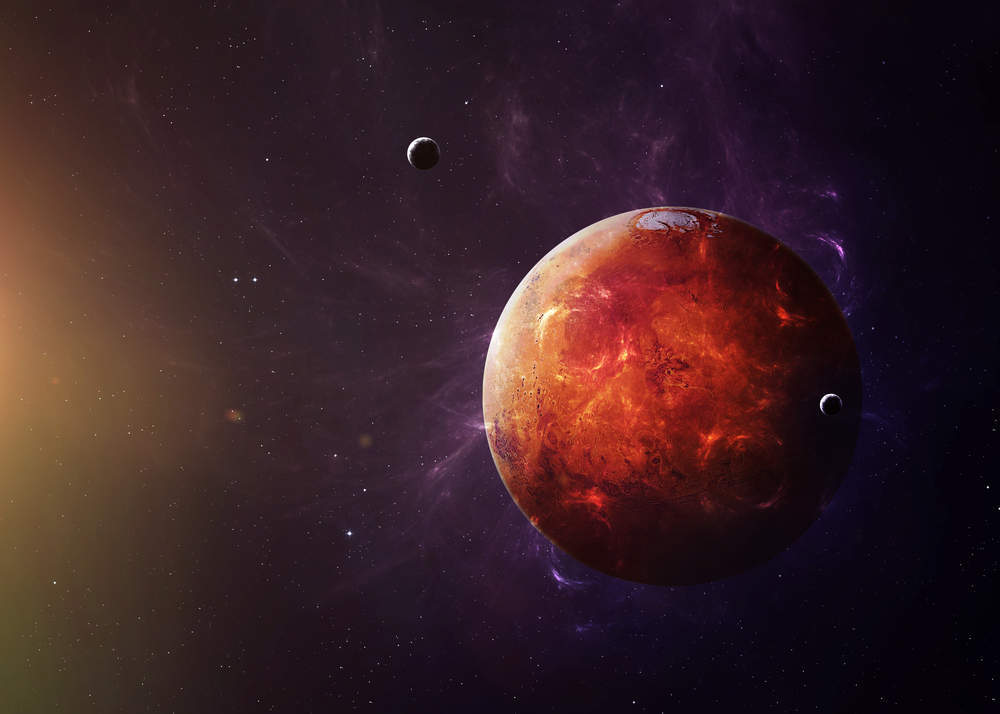
The surface of Mars has fascinated generations of science fiction writers.
The red planet offers the hope of a suitable, if hostile, extraterrestrial colony as humanity spreads its footprint across the solar system.
And today, the prospect of a manned mission to Mars – or indeed establishing a permanent human presence on the planet – is no longer confined to the domain of speculative fiction.
SpaceX founder and tech impresario Elon Musk last year launched an optimistic $10bn plan to bring the first batch of space tourists to Mars in 2024, while former US president Barack Obama in October reaffirmed the government’s aim to send humans to the planet in the 2030s.
In doing so he quoted John Noble Wilford, the New York Times reporter who covered the first moon landing, who said Mars pulls at the human imagination “with a force mightier than gravity”, a statement that has never seemed truer than it does today.
But as the likes of SpaceX and Nasa consider the first tentative steps towards setting up a long-term colony on Mars, what role could tapping into the red planet’s mineral resources play in making this long-held dream a reality?
How well do you really know your competitors?
Access the most comprehensive Company Profiles on the market, powered by GlobalData. Save hours of research. Gain competitive edge.

Thank you!
Your download email will arrive shortly
Not ready to buy yet? Download a free sample
We are confident about the unique quality of our Company Profiles. However, we want you to make the most beneficial decision for your business, so we offer a free sample that you can download by submitting the below form
By GlobalDataDigging up the red planet
When it comes to the ambition of establishing a Martian settlement, reaching the planet itself with a manned mission only scratches the surface of the challenge.
Given that regular trips ferrying cargo from Earth to Mars would be cost-prohibitive in almost any scenario, a colony would need to live off the land for the most part.
The relative scarcity of data on Martian geology means there is less confidence of mineral deposits than in even the riskiest inferred mineral resources on Earth.
However, there is enough information to make some estimations.
A 2009 research paper written by Michael West of the Mars Institute and Jonathan Clarke of the Australian Centre for Astrobiology contended that although the differences between the atmosphere and crusts of the Earth and Mars make mineral exploration less predictable, there are areas, especially large igneous provinces, volcanoes and impact craters that hold significant potential for nickel, copper, iron, titanium, platinum group elements and more.
Nasa has also identified that clay-like minerals are common in the planet’s surface soils, facilitating the simple production of ceramics for pottery.
The most common material measure by the landers that explored Mars’s surface as part of Nasa’s highly successful Viking programme in the mid-70s was silicone dioxide, the basic constituent of glass, which could be produced using time-honoured sand-melting techniques.
This could facilitate the production of fibreglass, which a recent Nasa research paper on establishing a human presence on Mars rated as “an excellent material for constructing various types of structure”.
How to mine Mars
Robots could be used for resource extraction tasks, as well as the tunnelling and construction work necessary to build out accommodation and industrial spaces.
One such robotic mining unit is under active development at Nasa.
The Regolith Advanced Surface Systems Operations Robot (RASSOR) was initially unveiled in 2013 and has since been developed and scaled up into a second iteration, which in recent tests proved capable of autonomously digging up soil using counter-rotating bucket drums on opposing arms.
The robot is designed to achieve near-zero horizontal and very little vertical net force, allowing it to load, haul and dump space regolith in low-gravity environments while maintaining low weight and minimal complexity to make it suitable for a mission to Mars.
Many more challenges will need to be considered before humanity can truly contemplate a life among the stars; Musk has acknowledged that it will take up to a century to create a permanent, self-sufficient human presence on the red planet.
But the first small steps being taken now could add up to mankind’s next giant leap.
A longer version of this article originally appear on Mining-technology.com. Read the original here.



